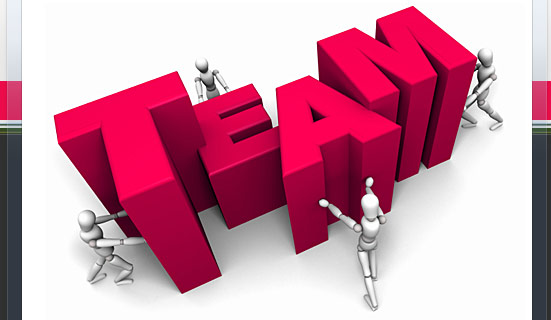 The true test of collaboration occurs when you really have to collaborate, say during a crisis or when the powers that be ask you to do more or to do something radically different.
The true test of collaboration occurs when you really have to collaborate, say during a crisis or when the powers that be ask you to do more or to do something radically different.
In short collaboration is a nice word but it’s only truly effective and real when what you’re collaborating on is difficult, uncomfortable and necessary.
Ron Ashkenas, writing for the HBR Insight Center Making Collaboration Work blog, addresses this dynamic of collaboration in his “Teams That Only Think They Collaborate” post. Ashkenas is a managing partner of Schaffer Consulting and a co-author of The GE Work-Out and The Boundaryless Organization. His latest book is Simply Effective.
“Like death and taxes, one of the inevitable realities of organizational life is the periodic ‘team challenge’”, he writes. Team members suddenly are assigned to accomplish something “beyond what they currently do or have done before.” For example a management group might face a requirement to reduce expenses or headcount by 20 percent. Or increase revenue by 10 percent during the next quarter. Or speed up a product launch by two months.
Those are challenging situations that will strain the mettle of any team, and as Ashkenas says, collaboration is required. Over the years, he continues, he’s seen teams respond in three ways, “only one of which is truly collaborative.” The first is compliance, where each team member responds by taking action in his or her own area—the team “complies with the need to do something, but avoids working together.”
The second response is cooperation, where again each member develops their own plan, but in this case shares the actions with the group. “While there is some amount of joint discussion, the focus is still on individual actions rather than a collective strategy,” says Ashkenas.
A true collaborative approach, which by the way is what happens in a Vested Outsourcing relationship, will lead to a more effective and robust outcome.
“The reality is that true collaboration is difficult,” he concludes. “It requires subordinating individual goals to collective achievement; it means engaging in tough, emotional give-and-take discussions with colleagues about strategies and ideas; and it often leads to working in new ways that may not be comfortable or easy. So given these difficulties, most teams find it easier to talk about collaboration rather than do it.”
Lip service is always easier than reality’s nuts and bolts. It doesn’t have to be as Ashkenas so ably describes. The Vested model creates an ecosystem of collaboration, innovation and trust to define and achieve Desired Outcomes while also accommodating the unexpected “business happens” nature of business and events.
The Vested focus is on delivering mutually agreed outcomes, team-building and continuity across functions from the start of the outsourcing relationship, and a governance framework that centers on insight, not merely oversight and bean-counting.
Yes, true collaboration is hard work, but it’s eminently doable…and necessary.